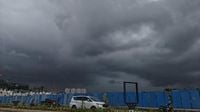As October drew to a close, India found itself at the mercy of a relentless weather onslaught, as Cyclone Montha and a simultaneous depression over the Arabian Sea battered vast swathes of the country with heavy rainfall, widespread flooding, and significant infrastructure damage. From Andhra Pradesh’s battered coastline to the rain-lashed hills of North Bengal and the inundated plains of Gujarat, millions experienced the disruptive power of nature’s dual fury.
Cyclone Montha, which made landfall on Andhra Pradesh’s coast on October 28, 2025, rapidly weakened as it moved inland, but its impact was anything but fleeting. According to the India Meteorological Department (IMD), by October 31, Montha had diminished into a well-marked low-pressure area over central Chhattisgarh, yet it continued to draw substantial moisture from the Bay of Bengal, triggering widespread heavy rainfall across eastern and western India (as reported by Business Standard and The Times of India).
The devastation in Andhra Pradesh was especially acute. G Ravi Kumar, the state’s Energy Minister, revealed on October 31 that nearly 13,000 electric poles, 3,000 kilometers of conductor lines, and 3,000 transformers were damaged by Cyclone Montha. The state’s losses were pegged at a staggering Rs 5,265 crore. Kumar noted, “Andhra Pradesh suffered significant damage to its power infrastructure during Cyclone Montha, with thousands of poles and transformers affected across coastal districts.” Yet, thanks to swift action, nearly 1,500 personnel were deployed, enabling electricity restoration within 24 hours in most areas, with full restoration to agriculture and aquaculture feeders expected within 48 hours. Shutdowns, he clarified, were implemented only in zones experiencing strong winds, prioritizing public safety and minimizing disruption.
But the cyclone’s wrath was not confined to Andhra Pradesh. As Montha moved north and northwest at a speed of 15 km/h, neighboring Telangana endured its own deluge. The IMD issued a yellow alert for Hyderabad on October 31, warning of rain, strong winds, and thunderstorms. Several districts, especially Warangal and Hanumakonda, were pummeled by rainfall exceeding 300 mm—the highest recorded in Telangana this season. The relentless downpour led to dramatic rescues, such as the evacuation of 375 students trapped for hours at Warangal’s Welfare Degree College for Women, saved by the Telangana State Police Disaster Response Force using ropes and a human chain (as detailed by The Times of India).
Infrastructure crumbled under the strain. A section of the Hyderabad-Srisailam highway near Nagarkurnool was washed away, stranding vehicles. Floodwaters inundated railway tracks and platforms at Dornakal station in Mahabubabad, disrupting train services. Flight operations in Hyderabad, Vijayawada, Visakhapatnam, and Rajahmundry were thrown into chaos. Airlines like SpiceJet and IndiGo issued advisories, urging passengers to check their flight status and plan for delays due to waterlogging and traffic congestion.
The IMD’s forecasts provided little solace for the days ahead. While Hyderabad was expected to see gradually clearing skies and moderate temperatures from November 1, the broader region remained under threat. Northern and Eastern districts of Telangana were braced for more heavy to very heavy rainfall, with some isolated pockets likely to receive extremely heavy downpours.
Meanwhile, the weakened remnants of Montha continued their march northward, pushing into central Chhattisgarh and then toward east Madhya Pradesh. The IMD warned that the system would keep triggering heavy rainfall as it moved, with the potential for further disruption in its path. By November 1, the cyclone’s core had become a low-pressure area, but its extensive moisture field lingered, keeping authorities on high alert in multiple states.
In North Bengal, the situation grew increasingly precarious. The IMD issued a red alert for four districts—Darjeeling, Kalimpong, Jalpaiguri, and Alipurduar—forecasting heavy to very heavy rainfall of 7-20 cm through November 1. At isolated locations, rainfall could exceed 20 cm. Landslide warnings were sounded for the hills of Darjeeling and Kalimpong, where saturated soils from earlier October flooding heightened the risk. Residents in landslide-prone zones were evacuated to temporary relief shelters, as authorities scrambled to prevent a repeat of past tragedies.
Other districts in West Bengal, including Cooch Behar, North and South Dinajpur, and Malda, were placed under orange alerts. Rivers such as the Teesta, Torsa, Raidak, and Jaldhaka were expected to see rising water levels, prompting continuous monitoring and advisories urging residents to avoid travel through waterlogged areas and stay away from riverbanks.
Simultaneously, a separate depression over the east-central Arabian Sea—positioned around 370 km southwest of Veraval, Gujarat—brought its own challenges. The IMD issued orange alerts for several coastal districts in Gujarat, including Gir Somnath, Amreli, Bhavnagar, Bharuch, and Surat, warning of heavy to very heavy rainfall and gusty winds reaching 30-65 km/h. Agricultural communities in the Saurashtra-Kutch region faced significant crop damage from prolonged inundation, with thunderstorms and lightning adding to the hazardous conditions. The depression was expected to move slowly northward, keeping the rain alert active through November 2, before rainfall would finally subside and dry weather return by November 3.
Mumbai and parts of coastal Maharashtra were not spared either. The IMD placed the city and adjoining districts under a yellow alert, forecasting light to moderate showers and cloudy conditions. Thunderstorms, lightning, and squally winds threatened areas in Raigad, Thane, Nashik, Aurangabad, and beyond. Even Delhi, though spared the worst, saw partly cloudy skies and a light haze, with temperatures hovering between 22°C and 28°C.
Throughout this turbulent period, authorities across India coordinated emergency responses, issued advisories, and evacuated vulnerable populations. Residents were urged to heed warnings, avoid unnecessary travel, and take precautions against waterlogging, landslides, and river flooding. The IMD’s real-time updates and color-coded alerts became a lifeline for millions, helping mitigate the cyclone’s toll on life and property.
As November dawned, the dual weather systems finally began to loosen their grip. Rainfall was forecast to diminish across most affected regions from November 2, with dry, stable conditions expected to return by November 3. Yet, the scars left behind—damaged infrastructure, battered crops, and displaced families—served as a sobering reminder of nature’s unpredictability and the critical importance of preparedness and resilience in the face of extreme weather events.


